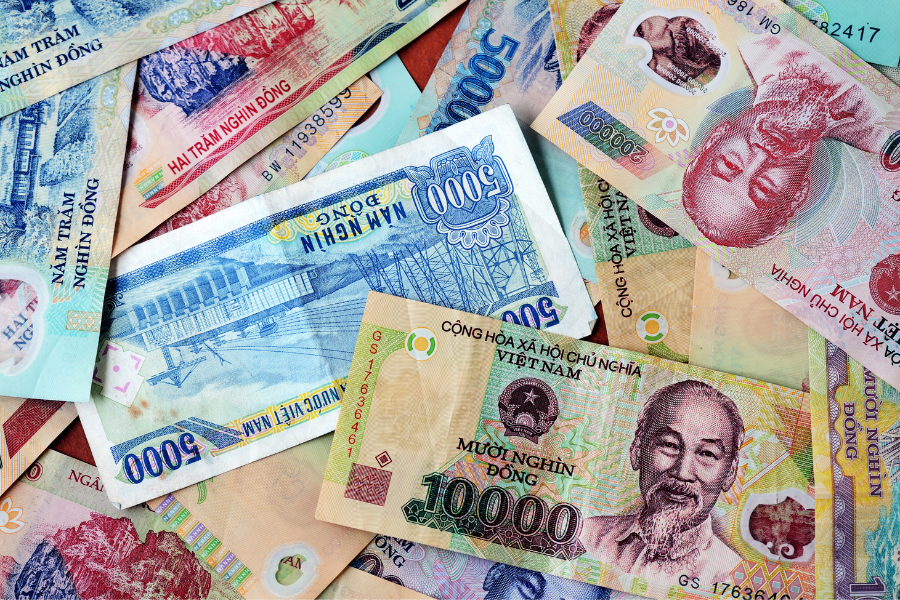In this article, we’ll have a look at the diverse and dynamic world of Asian countries and their currencies, a subject of interest for seasoned travelers and savvy investors alike.
As the largest and most populous continent, Asia’s unique blend of cultures and economies offers unparalleled opportunities for exploration and capital growth. Understanding the monetary systems of these countries is pivotal, providing insights into their economies, potential for investment, and day-to-day cost of living for those seeking an international lifestyle.
For more in-depth insights into global travel and investment strategies, visit Nomad Capitalist, your reliable partner to the world of international living and strategic financial planning.
A Comprehensive Overview of Asian Currencies: A Deep Dive into the Economic Powerhouses of Asia

Hosting several of the globe’s most expansive nations and influential economies, Asia stands out as the biggest continent in the world.
Every country on this continent has its own money, an official currency that reflects its socio-economic context and plays a significant role in local commerce and international banking payments.
Let’s begin.
1. Japanese Yen (Japan)
The Japanese Yen, a key player in the global financial stage and the third most traded currency in the world, holds considerable sway over the economies of Asia.
In Japanese, the word yen (円) is synonymous with “round,” a name inspired by the circular form of the coins.
At the end of the Edo era in 1868, Japan introduced significant changes in its banking system. Embracing a modern central bank model, the nation introduced the yen, a milestone development during the transformative period of the Meiji Restoration.
It has since become a crucial player in Asia’s monetary policies.
2. Chinese Yuan (China)
The Chinese Yuan Renminbi (CNY) falls under the careful management of the People’s Bank of China. The term “yuan” carries with it a rich history, harking back several centuries when it was used to denote round coins.
Fast forwarding to the contemporary economic landscape, the stature of the Chinese yuan has witnessed remarkable growth.
A pivotal moment in this growth trajectory was China’s induction into the World Trade Organization in 2001, which propelled the yuan’s standing on the global stage.
3. Indian Rupee (India)
India is a major South Asian nation. It uses the Indian Rupee as its official currency. The term “rupee” is derived from the Sanskrit word “Rupya,” which means “wrought silver.”
Introduced by Sher Shah Suri during his reign from 1540 to 1545, the Indian rupee has weathered various economic changes throughout history.
4. Indonesian Rupiah (Indonesia)
In Southeast Asia, Indonesia, the world’s largest archipelago state, uses the Rupiah as its currency.
Introduced in 1946 by the Indonesian government to replace the Japanese-controlled Dutch East Indies guilder, the rupiah has seen significant fluctuations due to the socio-political changes within the country.
5. Hong Kong Dollar (Hong Kong)
In the vibrant city of Hong Kong, the Hong Kong dollar operates as the territory currency. First used in 1937, the Hong Kong Monetary Authority is now the custodian of this currency. While initially, its value was tethered to the British pound, a shift occurred in 1983.
From then on, it’s been hitched to the United States Dollar, a move that has contributed significantly to the stability of its value.
6. Singapore Dollar (Singapore)
Introduced in 1967, a mere two years after Singapore achieved independence from Malaysia, the Singapore Dollar saw significant growth, establishing itself as one of the most influential currencies in Southeast Asia.
The Monetary Authority of Singapore (MAS) currently manages the Singapore dollar.
Thanks to the country’s vigorous economy and its solid banking sector, the Singapore dollar has garnered a well-respected standing in the region.
7. Philippine Peso (Philippines)
The Philippine Peso was introduced in 1852, making it one of the oldest in the region. Formerly known as the “peso fuerte” or the “strong peso,” it continues to serve as the Philippines’ official currency.
It underwent decimalization in 1861 and survived numerous political shifts in the country.
8. Vietnamese Dong (Vietnam)
Vietnam’s currency, the dong, has a fascinating history. The dong, Vietnam’s official currency, came into existence in 1978 following the union of North and South Vietnam.
With the passing years, the country’s economic turbulence and inflation have necessitated multiple revaluations of the dong. Because of this, it became recognized as one of the world’s currencies with the least value. (Making it an affordable choice for expats.)
9. Korean Won (South Korea)
The Korean Won is the currency of South Korea. Following the division of Korea in 1945, the won was introduced to replace the Korean yen. The won, which is circulated and issued under the authority of the country’s Central Bank, is carefully managed by the Bank of Korea.
Over the years, it has seen moderate fluctuation against the USD, but it remains a significant Asian currency.
10. North Korean Won (North Korea)
The North Korean Won is the official currency of North Korea. Issued by the country’s central bank, the Central Bank of the Democratic People’s Republic of Korea, this currency operates in a strictly regulated economy and is not openly traded on global forex markets due to extensive international sanctions. (A situation which is unlikely to change any time soon.)
11. New Taiwan Dollar (Taiwan)
Taiwan’s official currency is the New Taiwan Dollar, introduced in 1949 to replace the Old Taiwan Dollar at a ratio of 40,000 to one.
The New Taiwan Dollar has been quite stable over the years, largely thanks to Taiwan’s strong economic performance in the tech industry. Though this stability is threatened by growing concerns over conflict with China.
12. Thai Baht (Thailand)
In Southeast Asia, the Thai Baht serves as Thailand’s official currency. The Baht, dating back to the 19th century, originally referred to a specific weight in gold.
Today, the Bank of Thailand controls this currency, which stands out as one of the most resilient among emerging economies.
13. Malaysian Ringgit (Malaysia)
Malaysia’s currency, the Ringgit, has been the legal tender since 1975, replacing the Malaya and British Borneo dollar. The term Ringgit translates as “jagged” in Malay and originally referred to the separated edges of Spanish silver dollars widely circulated in the area.
14. Brunei Dollar (Brunei)
Another noteworthy currency of Southeast Asia is the Brunei Dollar. It’s interchangeable with the Singapore dollar, a unique arrangement maintained since 1967, highlighting the close ties between the two nations.
The Brunei Currency and Monetary Board manage the Brunei dollar.
15. Pakistani Rupee (Pakistan)
Pakistan, located in South Asia, uses the Pakistani Rupee as its currency. It was introduced after the partition of India in 1947.
The Pakistani rupee has been subject to high inflation and devaluation over the years, impacting its exchange rate with the USD.
16. Sri Lankan Rupee (Sri Lanka)
Often represented by the acronym LKR, the Sri Lankan Rupee is the official currency used in Sri Lanka. It was first introduced in 1872, replacing the British pound at a rate of 1 pound to 2 rupees. The Central Bank of Sri Lanka now issues the rupee.
17. Bangladeshi Taka (Bangladesh)
The Taka, Bangladesh’s currency, was introduced in 1972, replacing the Pakistani rupee at par. Over the years, the Taka has experienced some depreciation against the USD, primarily due to economic factors.
18. Saudi Riyal (Saudi Arabia)
Saudi Arabia leads the economic landscape in the Middle East. The official currency utilized by the kingdom is the Saudi Riyal. This currency is governed by the Saudi Arabian Monetary Authority.
Introduced in 1925, the riyal has been tied to the USD since 1986, lending it stability compared to many other currencies.
19. Turkish Lira (Turkey)
The Turkish Lira, serving as Turkey’s currency since 1844, has seen many changes, particularly in the last two decades. The Grand National Assembly of Turkey passed a law in 2003 that led to the removal of six zeros from the currency, birthing the “New Turkish Lira”.
The word ‘new’ was removed in 2009 and it reverted to “Turkish Lira” again.
20. United Arab Emirates Dirham (United Arab Emirates)
In the United Arab Emirates, the UAE Dirham acts as the official currency. Introduced in 1973 by the United Arab Emirates Currency Board, it replaced the Bahraini Dinar and the Qatar-Dubai Riyal.
The UAE Dirham, overseen by the Central Bank of the UAE, has been pegged to the United States Dollar since 1997.
21. Qatari Riyal (Qatar)
The Qatari Riyal is the currency of Qatar. This Middle Eastern nation is small but wealthy and hugely influential.
Qatar’s vast natural gas and oil reserves have contributed to the Riyal’s overall stability against the USD.
22. Bahraini Dinar (Bahrain)
The Bahraini Dinar is the currency of Bahrain, introduced in 1965 to replace the Gulf Rupee.
Renowned for its status as one of the most valuable currencies globally, it is intrinsically linked to the country’s meticulously regulated financial industry.
23. Jordanian Dinar (Jordan)
Jordan’s currency, the Jordanian Dinar, was introduced in 1949, replacing the Palestinian Pound.
The Central Bank of Jordan manages the dinar, and it has remained relatively stable due to the country’s prudent monetary policies.
24. Israeli New Shekel (Israel)
The Israeli New Shekel, often referred to as simply the shekel, is the official currency of Israel. The “New Shekel” replaced the old Shekel in 1985 due to rampant inflation.
The Bank of Israel manages this currency, which has proved relatively resilient in recent years despite regional geopolitical tensions in the region.
25. Kuwaiti Dinar (Kuwait)
The Kuwaiti Dinar, which was first introduced in 1961, serves as the official currency of Kuwait—a small nation located on the Persian Gulf that boasts considerable oil reserves.
With the Central Bank of Kuwait overseeing its management, the Kuwaiti Dinar has gained recognition as one of the most robust currencies globally when compared to the USD.
This strength is underpinned by the substantial oil revenues generated by the country.
26. Omani Rial (Oman)
The Omani Rial is the currency of Oman, a nation in Western Asia. In 1973, the rial replaced the Rial Saidi at par due to the change in the regime. Given Oman’s robust economy, primarily driven by oil, the Rial has demonstrated considerable stability over time.
27. Turkmenistan Manat (Turkmenistan)
The Turkmenistan Manat is the currency of Turkmenistan, a country in Central Asia. The manat was introduced in 1993, replacing the Russian Ruble.
The Central Bank of Turkmenistan is the issuing authority, and while the country has large natural gas reserves, the Manat has experienced significant inflation.
28. Uzbekistani Som (Uzbekistan)
The Uzbekistani Som is the official currency of Uzbekistan. It was first issued in 1993 to replace the Soviet Ruble.
The currency has experienced inflation in the past few years. This has prompted the Central Bank of the Republic of Uzbekistan to introduce higher-value banknotes.
29. Kazakhstani Tenge (Kazakhstan)
In Kazakhstan, the largest landlocked country globally, the Tenge is the official currency. Introduced in 1993, the Tenge replaced the Soviet Ruble at a rate of 1 Tenge = 500 Rubles.
Despite periods of inflation, the National Bank of Kazakhstan has taken measures to stabilize the Tenge and limit currency speculation.
30. Kyrgyzstani Som (Kyrgyzstan)
The Kyrgyzstani Som is the official currency of Kyrgyzstan. Introduced in 1993 to replace the Soviet Ruble, the Kyrgyzstani Som has maintained relative stability, which can be attributed to the country’s Central Bank’s strict regulations.
Asia, with its rich history, diverse economies, and unique monetary systems, provides a fascinating study of currencies.
From the Japanese Yen and Chinese Yuan to the Indian Rupee and Singapore Dollar, the currencies of Asia reflect each country’s economic journey and aspirations on the global stage.
Given the rise of global integration and the intricate web connecting economies worldwide, it is evident that these Asian currencies will maintain their important role in shaping the international financial landscape.
Conclusion
From the strength of the Kuwaiti Dinar to the resilience of the Singapore Dollar, the currencies of Asia offer insights into the socio-economic contexts of the countries they represent.
They’re not just a medium of exchange. They’re also a window into the past, present, and future of these financially vibrant nations.
Become a part of the Nomad Capitalist community where we guide you through the complexities of different economies.
Contact us today so you can provide you with expert advice on maximizing your wealth, and help you achieve global financial freedom.
Asian Countries and Their Currencies Frequently Asked Questions
This can depend on how you define ‘top’. If referring to value against the US Dollar, some of the highest-valued currencies in Asia include the Kuwaiti Dinar, Bahraini Dinar, Omani Rial, and Jordanian Dinar.
If referring to global recognition and usage, currencies like the Japanese Yen, Chinese Yuan, Indian Rupee, and Singapore Dollar are among the top. Economic stability and performance also play a role in defining the ‘top’ currencies.
The Kuwaiti Dinar, the official currency of Kuwait, is often considered the highest-valued currency in Asia and even the world, in terms of value against the US Dollar. This high valuation is largely due to the country’s significant oil reserves.
India was the first in Asia to introduce a decimal system for their currency. This occurred in 1957 when the Indian Rupee was decimalized and subdivided into 100 smaller units known as ‘Paise’.
A central bank governs the management of a country’s money supply. It has various important responsibilities, including managing interest rates, ensuring the stability of the financial system, issuing currency, and efficiently handling the country’s foreign exchange reserves and gold reserves.
Pegging a currency to the US Dollar helps stabilize the value of the currency by linking it to the value of a more stable and globally accepted currency. This can help reduce inflation, encourage foreign investment, and stabilize exchange rates.
















